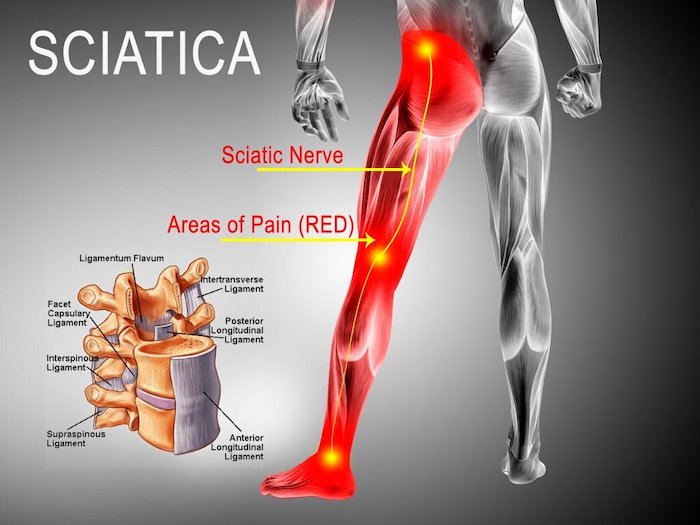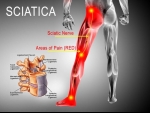
Sciatica is a general term describing pain that radiates from the buttock downward into your leg along the course of your sciatic nerve.
With all the sciatica treatments that are available to you, how do you decide on the best option?
Treatments can range from nonsurgical methods, such as a guided exercise program and/or oral medications to more invasive options, such as injections or surgery. To aid you in your decision-making process, here is a comparison of epidural steroid injections and exercise for treating sciatica pain:
Epidural Steroid Injections Relieve Inflammation in Your Lower Back
A lumbar epidural steroid injection is a procedure where a doctor injects steroids in your lower back near your spinal cord and nerve roots.
Epidural Injections May Provide Immediate Pain Relief
Steroids work by decreasing the production of inflammatory chemicals and reducing your nerve fibers' sensitivity to pain. As a result, fewer pain signals are generated and you feel less pain.
The goal of epidural steroid injection treatment is to:
- Reduce sciatic nerve pain by decreasing inflammation
- Improve mobility and function in your lower back and legs
Steroid injections may also help you limit or eliminate the need for long-term oral medications, thus minimizing or preventing the potential side effects associated with them.
Epidural Steroid Injections May Not Work for All Types of Sciatic Pain
When performed appropriately, the majority of patients experience pain relief after an epidural steroid injection. In general, lumbar epidural injections have better outcomes when sciatica is of recent onset (such as from an acute disc herniation) and the nerve root compression is minimal.
Repeat Injections May Be Needed for Long Term Pain Relief
Patients who have a positive but incomplete response to a single injection may benefit from a repeat injection. The decision to perform a subsequent injection should be determined by the response to the previous injection.
Once the effect of the injection wears off, recurrences of sciatica are possible. Some people may not experience any pain relief while others may have a long-term improvement in their sciatic pain. While this treatment is relatively safe, potential risks are possible.
As a general rule, doctors typically consider epidural steroid injections if your pain persists after some combination of nonsurgical treatment, such as physical therapy and exercise, oral medications, massage therapy, and/or manual manipulation are tried for several weeks.
Exercise Supports and Stabilizes Your Lower Back
Exercise and physical therapy are a part of nearly every sciatica treatment plan. Sciatica exercises target specific tissues in your lower back to provide the following goals:
- Decrease the pressure on your spinal nerves, alleviating pain, numbness, and weakness in your legs
- Stimulate the functions of your nervous system, improving the health of your sciatic nerve
- Decrease stresses through a healing herniated disc
- Promote strengthening in line with the patient’s directional preference (forward or backward bending of the spine)
- Maintain a proper posture
- Strengthen your abdominal, core, and lower back muscles
Exercise also improves the flexibility in your lower back, helps reduce body weight, and provides restful and sound sleep.
Exercise Brings Healing Nutrients to Your Sore Back
When you exercise, the tissues in your lower back receive more blood, healing nutrients, and oxygen. Exercise also helps to remove toxins from your muscle fibers, relieving stiffness and improving flexibility.
Exercise May Prevent Recurrences of Sciatica
When you commit to exercising daily, your lower back regains its strength and stability, reducing future sciatic pain flares, muscle fatigue, and pain.
The Same Exercise May Not Work for Everyone
It is important to learn sciatica exercises from a trained therapist who can design the exercise regimen to target your underlying condition. For example, the exercises for sciatica caused by a herniated disc may vary based on the location of the herniation and the resulting type of stenosis (narrowing of the spinal canal or bony opening for spinal nerve roots). In addition to exercise, some therapists may recommend manual therapy and/or physical therapy to treat your sciatica.
A therapist can also guide your posture and make modifications if an exercise seems too difficult or painful.
Combining Both Treatments
If your sciatica symptoms are preventing you from finding long-term relief by way of exercise, you may want to consider an epidural steroid injection to allow you to perform your targeted exercise program. An epidural injection may help provide enough pain relief for you to begin and/or continue an exercise program to help alleviate your sciatica symptoms.
Finding the best course of treatment for your sciatica symptoms often comes down to a process of trying out different methods, as what works for one person may have little effect on another. Discuss your possible treatment options with a doctor to see what is recommended and what may work best for you.
Precision Pain Care and Rehabilitation has two convenient locations in Richmond Hill – Queens and New Hyde Park – Long Island. Call the Richmond Hill office at (718) 215-1888, or (516) 419-4480 for the Long Island office, to arrange an appointment with our Interventional Pain Management Specialist, Dr. Jeffrey Chacko.













